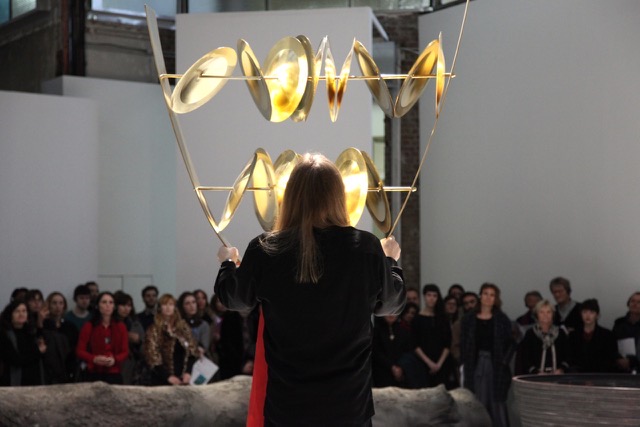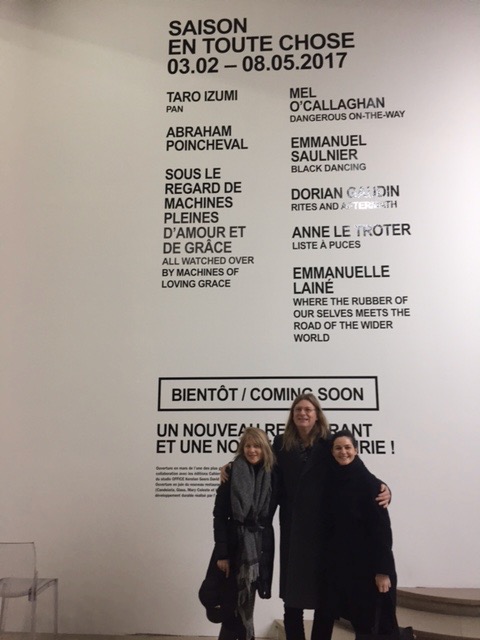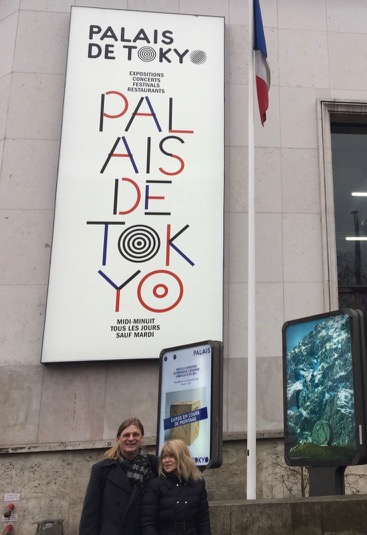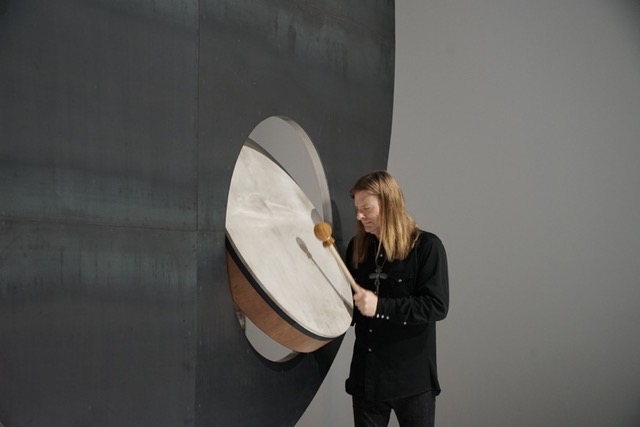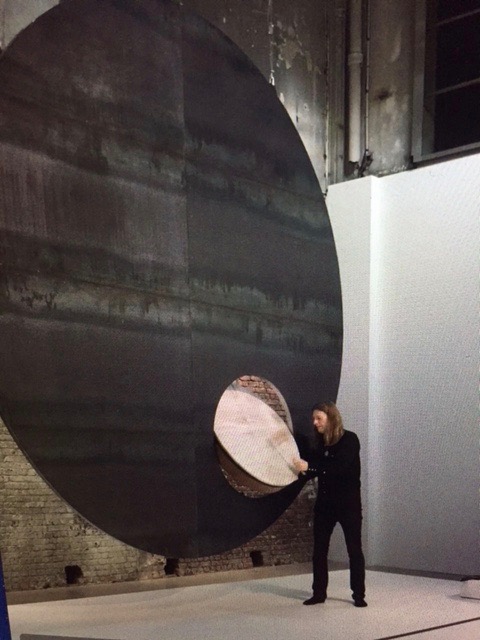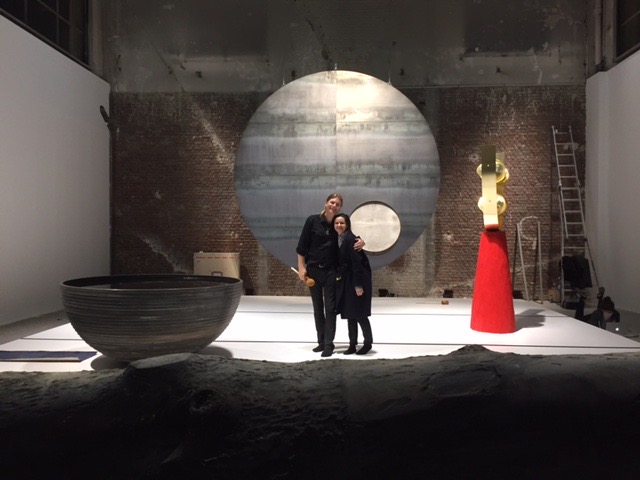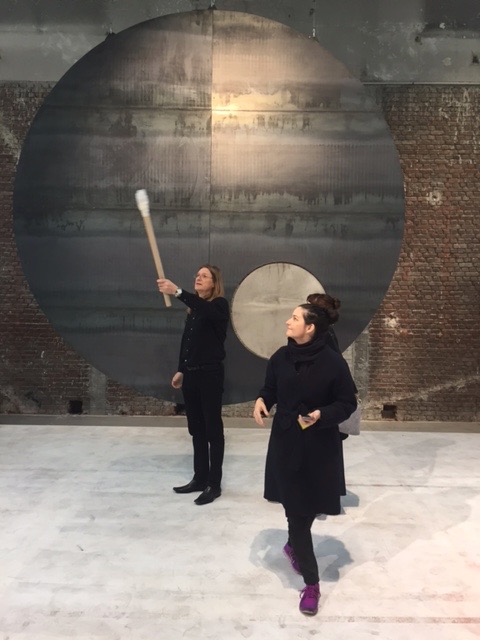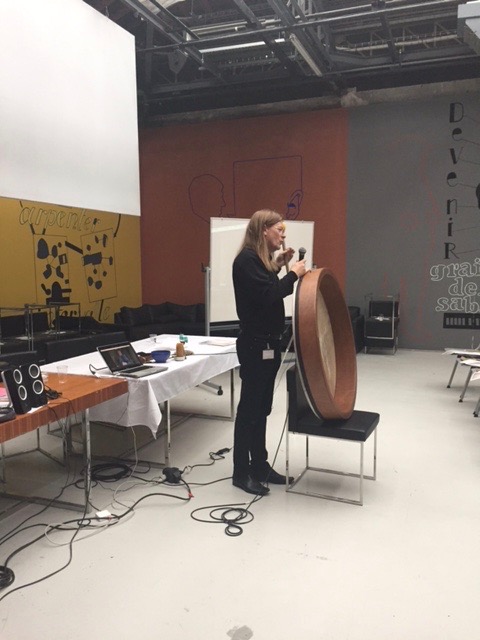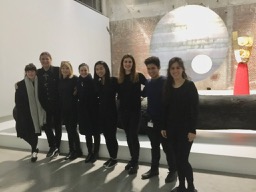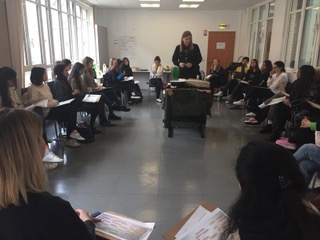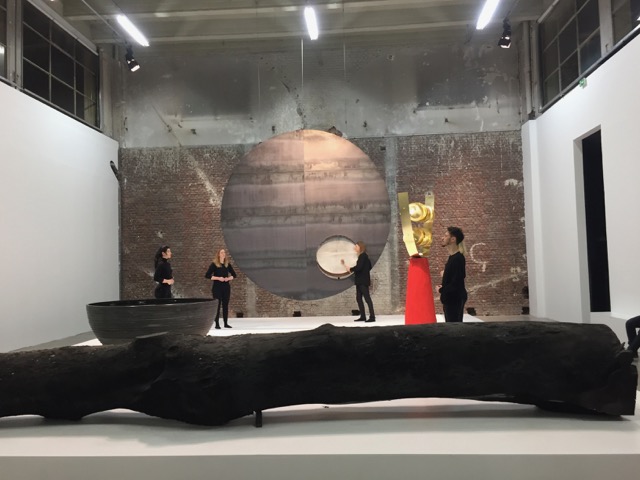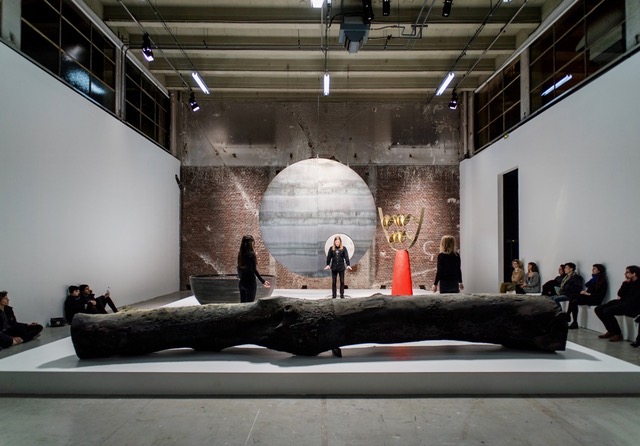
Ancient Art as Living Ritual — The Cuyamungue Institute’s Ritual Postures Featured in a Modern Art Exhibit in Paris
by Laura Lee Robear, Co-Director, Cuyamungue Institute
Ritual Postures, decoded from ancient artifacts, have a natural home in institutions devoted to art. So Paul and I happily accepted the invitation of a modern artist to showcase an unsung aspect of art and the early cultures that memorialized an embodied spiritual practice.
Our work is portable. We’ve taken it to classrooms, conference rooms, living rooms, outdoors, even laboratories. And the Palais de Tokyo of Paris, the largest center of contemporary art in Europe, was a most fitting location to make accessible and relevant, this very ancient practice.
Mel O’Callaghan, a visual artist based in Paris and Australia, was intrigued by the work of our mentor and founder, the late anthropologist Dr. Felicitas D Goodman. She had passed nearly a decade prior, so Mel reached out to us, the directors of the Cuyamungue Institute. Her invitation was intriguing — to collaborate on her upcoming art installation, as she said, she was “fascinated to witness a ritual as a form of artistic practice that appeared in some ways to mirror her own.”
We envisioned a performance piece around our ritual, to be performed on a stage with dramatically outsized ritual tools. And indeed, we’d always likened the steps of our ritual for Ecstatic Trance, with Ritual Postures, as a form of sacred dance.
We structured this a few important conditions. We wanted this to be an authentic ritual, not a performance about ritual. Participants needed the opportunity to genuinely enter the trance state, enjoying the full 15-minutes of sound induction with Paul drumming, and the chance to journal their experiences afterward, after we left the stage. To do so, they first needed to understand the significance and sacred structure of each ritual step, and experience the ritual, and ecstatic trance state, ahead of time. This wasn’t just theater. This was the enduring power of art — a rather different purpose and understanding of modern art — as known and utilized by our ancestors. This was meant to engage us at our core, transport us, to remind us who we truly are. This was sacred work.
Our collaboration began online, with Mel noting the logistics and parameters of the platform stage that was to hold our ritual tools. No burning of sage, no tossing of cornmeal. For us this was no problem, these were familiar constraints in public and academic spaces, easily accommodated. And here limitations could emphasize aspects of our choreography — the gestures of smudging without the sage, an offering of a few drips if water held in the hand, as it leaves no trace. So on the stage Mel placed a large log, charred to black, and huge metal bowl holding only an inch of water for weight considerations. We sent recordings and photos of our drum and rattles, asking that the drum be placed so it could tilt at a comfortable angle for beating, and a rattle that could turn with us as we honored the four directions.
Mel accommodated by commissioning a large skin frame drum with the same look and tone, held in a 13-ft diameter circular metal frame with side pegs to pivot. Her rattle rotated with Paul, on a base with bearings. And she scheduled a one-day workshop in Ritual Postures for 100 art students at The New School Parsons Paris, where she taught.
We arrived in Paris in early 2017 to spend a month readying for the exhibit opening, and two weeks with the opening, and daily performances. There was lots to do: we worked with Mel, designed the choreography, taught not only the workshop for her students, we were delighted when many of the museum staff who we had gotten to know, from curators to guards, asked for their own workshop. We also held rehearsal sessions for the choreography with students who volunteered to join us on stage, and take our place once we departed. For the grand opening, we sat on a Q&A panel with an anthropologist from the nearby Quai Branly Museum, met the press, and fielded questions from many of the 150 journalists attending, alongside Mel. And as this was Paris — we spent every other moment sightseeing and touring all the other museums.
We are grateful to Mel and her team, her students, the Palais de Tokyo, the journalists, and all who attended this exhibit. We knew we had succeeded in our objective by the comments of participants. The students expressed surprise, to realize that while on stage, the outer world faded as they dropped into Ecstatic Trance, this “hybrid state of the waking dream”. Many in the audience held the posture with us during the drumming with eyes closed, taking their time to return to this reality, and lingering afterwards. I took the opportunity to talk with them as they described their own visions. This stage was not mere spectacle. If one was willing, it became a portal to an immersive, participatory, transcendent experience, a dance between the explicate and implicate realms. Art meant to be not just viewed, but lived and embodied. The ancient postures memorialized in clay, stone, and bone are not static forms. They beckon us still, an archive with hidden access codes to reactivate a long dormant door within to a larger conversation with the cosmos, with our ancestors, with the energetic intelligence that binds all life.
What’s more — this inspired and confirmed our own ideas for a documentary and a new museum exhibit — for there are many stories these artifacts want to share. Ask us what more we can bring to life, to further explore Ritual Postures and the power of art as our early cultures used it!
A Living Ritual on the Museum Stage
